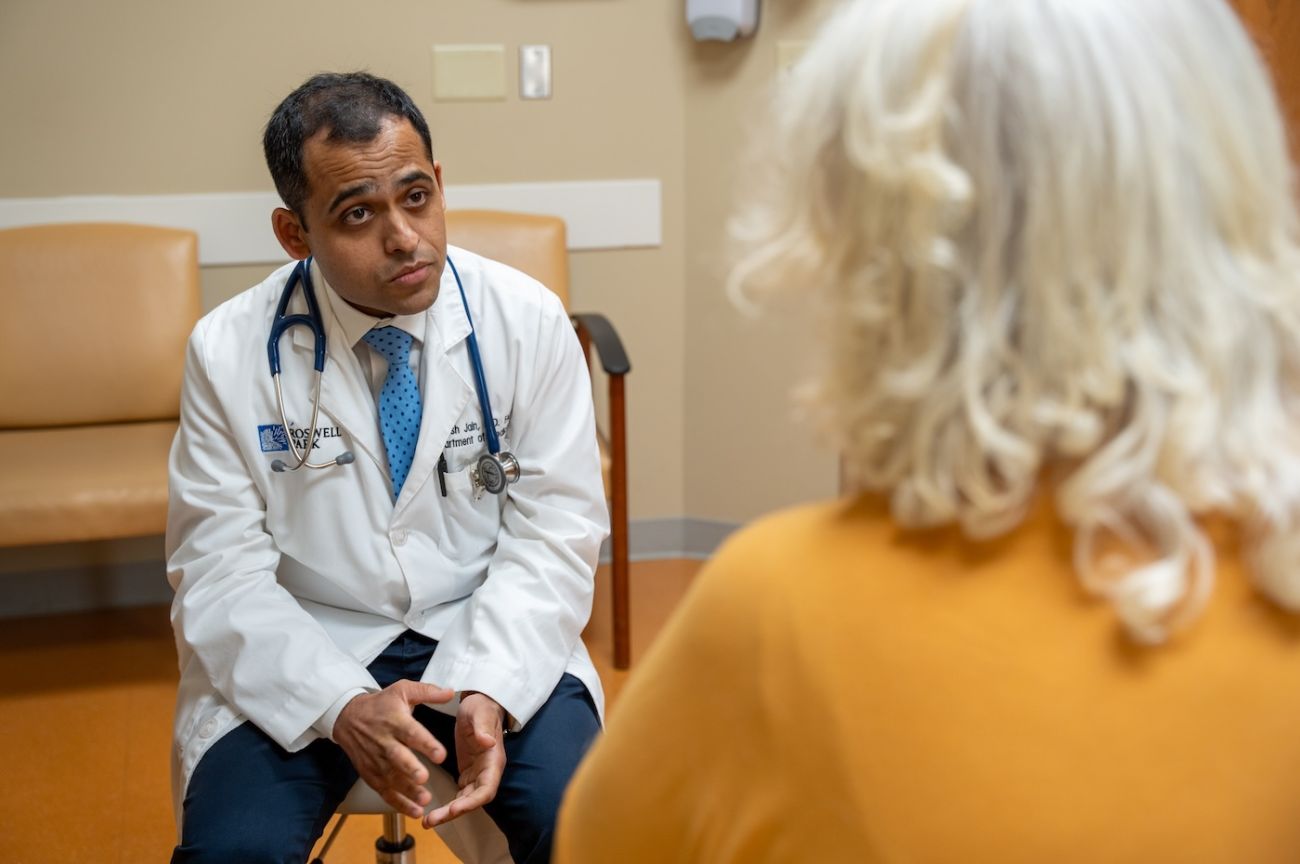Am I at risk for lung cancer?
Our Lung Cancer Screening Program is designed to detect lung cancer early — when it is most curable.
Learn moreYour risk for lung cancer may be increased due to a combination of lifestyle, environmental and genetic factors.
- Smoking. This one factor, including cigarettes, pipes, cigars, marijuana and crack cocaine, accounts for over 85% of all lung cancers. Even after quitting, former smokers remain at risk for lung cancer. Risk from smoking is based both on the number of cigarettes smoked per day and the number of years smoked.
- Second-Hand Smoke Nonsmokers who live with smokers have one-quarter (25%) of the smoker's increased risk, just from inhaling the smoke in the air
- Radon. A radioactive gas that forms from the breakdown of uranium in soil and rocks, radon is typically found in basements with little or no ventilation or when they flood, as well as in mines. You cannot see, taste or smell radon. Radon levels in the Western New York region tend to be higher than in other areas of the country, and can vary widely even between houses in the same neighborhood. The combination of exposure to radon and tobacco smoke can significantly increase your risk for developing lung cancer. You can have your home tested for radon, and if the level is high, mitigation units can reduce your radon exposure.
- Asbestos and other substances. Asbestos is a mineral made of tiny fibers that are easily inhaled. Asbestos is used in many industries including steel plants, shipbuilding, brake repair, insulation, plumbing and construction. People who work in certain occupations, such as those in construction and chemical industries, are often exposed to asbestos, arsenic, chromium, nickel, soot, tar, and other substances and may have a greater risk of lung cancer. Your risk increases with the number of years you’ve been exposed to these substances.
- Air pollution. Air pollution, including diesel fumes, may increase the risk of lung cancer.
- Existing lung disease. Emphysema, chronic bronchitis, tuberculosis or chronic obstructive pulmonary disease (COPD) can increase your risk. Lung cancer risk from COPD peaks just after diagnosis with COPD. If you have COPD, your doctor should evaluate and changes in your breathing or in your control of COPD.
- Family history. If you have a parent, sibling or child who had lung cancer, you may face increased risk of the disease, even if you don't smoke. Researchers are have found genetic markers that can be linked to lung cancer in families.
- Personal history of cancer. If you’ve ever had esophageal, head and neck cancer or prior lung cancer, you face increased risk for lung cancer.
- Age. Most people diagnosed with lung cancer are older than age 65.
- Profession. Occupations in firefighting, railroads and construction, or other jobs that expose you to lots of dust or diesel fumes may increase your risk.
Can non-smokers get lung cancer?
Yes. A number of people with lung cancer — around 12 percent of those diagnosed — have never smoked cigarettes. Other causes of lung cancer, such as second-hand smoke, air pollution, radon, repeated infections and inherited genes could be factors. While we are not sure of the specific cause of the lung cancer in people who never smoked, much of the cancer treatment is the same as for smokers. You can do everything right, and still develop lung cancer
